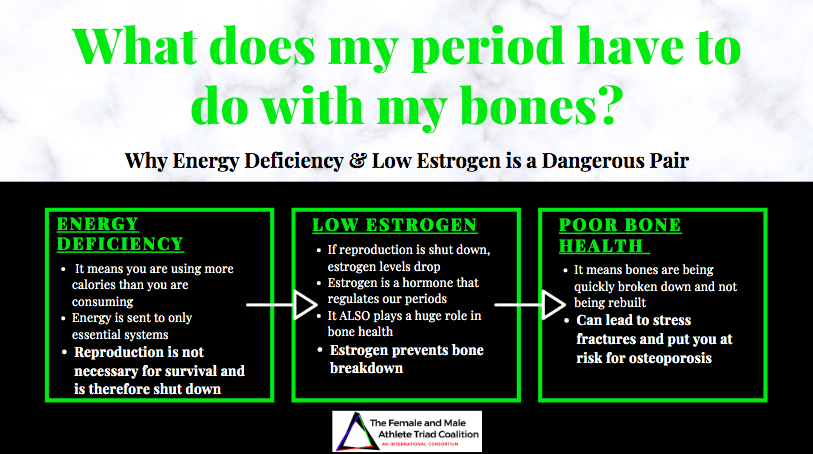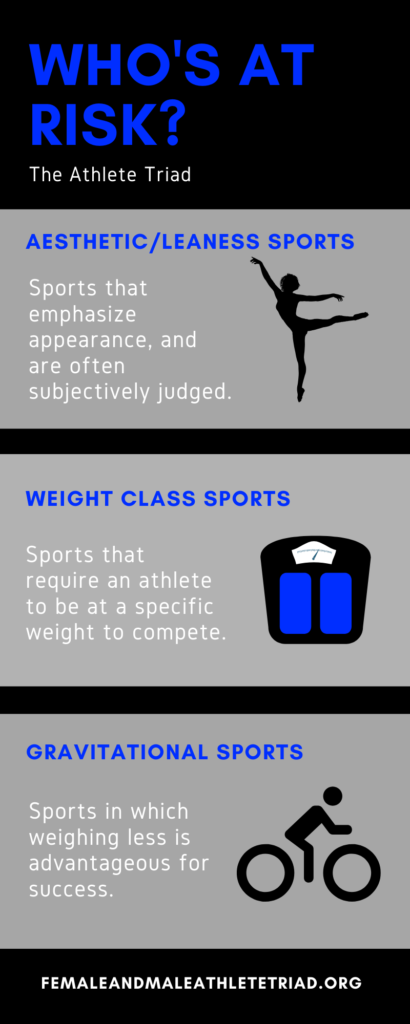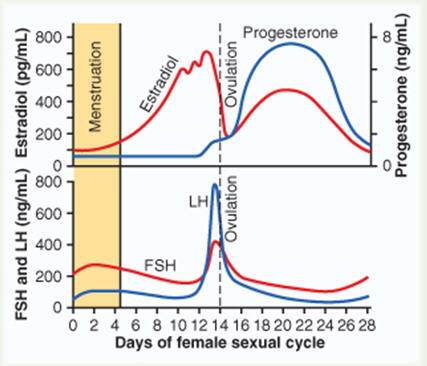Reproductive dysfunction can affect both women and men

Women
Reproductive health falls along a spectrum from healthy to unhealthy.
What are “Normal” Menstrual Cycles?
The normal menstrual cycles recurs in women every 28-35 days. During the menstrual cycle the primary hormones produced are estrogen and progesterone, which can be measured in urine and blood as estradiol and progesterone. Below is an example of a normal reproductive hormone profile, which shows estrogen production increasing in the first phase of the the cycle (follicular phase), a peak of luteinizing hormone mid cycle to signal for releasing an egg from the ovaries (ovulation), and an increase in progesterone production in the second phase of the the cycle (luteal phase) to single for menstruation. Women with normal menstrual cycles, produce a healthy amount of estrogen, to support reproductive health and bone health.
Subclinical Menstrual Disturbances
- Women with luteal phase defects can have a short luteal phase <10 days (short), inadequate progesterone production <5 ng/ml (inadequate), or a combination of both short and inadequate cycles.
- Women with oligomenorrhea have long and inconsistent cycles of >36 days, but less than 90 days.
- Women can have anovulatory cycles, in which menstrual hormones are not sufficient to release an egg through ovulation.

Severe Menstrual Disturbance
In women, the severe reproductive manifestation of The Triad is amenorrhea, or the absence of menstrual cycles for 3 months or longer. When no menstrual cycles have occurred before age 15, this is called primary amenorrhea. When no menstrual cycles have occurred for 3 months or more, in women who previously had menstrual cycles, this is called secondary amenorrhea.
IMPORTANT: Losing your menstrual cycle is NOT a normal response to exercise. This is your body’s way of signaling an energy deficiency due to not eating properly to refuel your body after exercising.

Men
In men, reproductive function is sensitive to energy deficiency/ low energy availability leading issues with the following :
Men who participate in high volumes of exercise training often have low testosterone levels. While often testosterone in active men is reported to be in the subclinical range, some cases have been reported to be clinically low.
Issues with spermatogenesis and androgenic hormonogenesis, can result in
- poor sperm quality (oligospermia)
- immature sperm
- abnormal morphology
- poor motility
Men who participate in high volumes of exercise training often have decreased reported sex drive (libido).
Reproductive dysfunction most commonly affects men and women involved in weight-class sports, sports that emphasize leanness or muscularity, and endurance sports.
- Diving
- Gymnastics
- Ice Skating
- Dance
- Wrestling
- Boxing
- Rowing
- Running
- Ski Jumping
- High Jump
- Pole Vault
- Cycling




